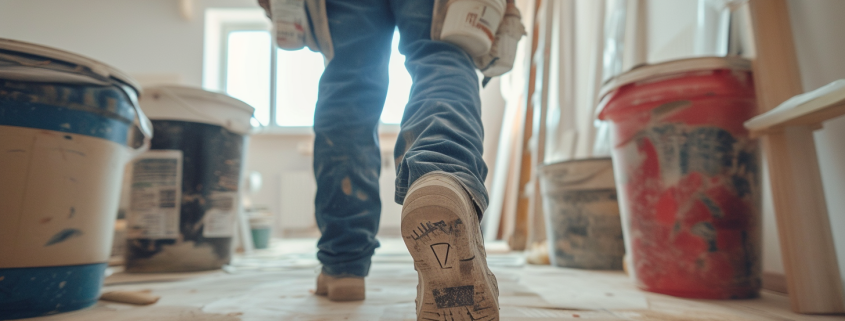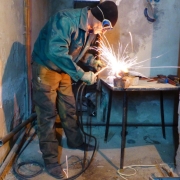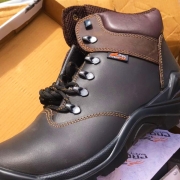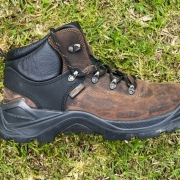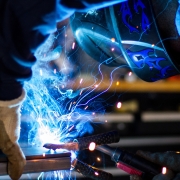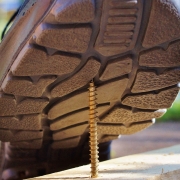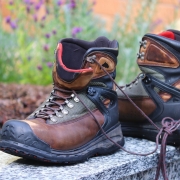Hydrolysis : Why you no longer need to worry at ProFit Safety Footwear
It felt like a very important time to update everyone buying our product in industry regarding why Hydrolysis is no longer a concern at ProFit Safety Footwear.
I get a few messages every so often, where rightfully so (well done to you) many ask about the concern of yesteryear which was “Hydrolysis” and yes, 15 years ago it was a legitimate issue for some companies and still is for many today.
But NOT for us.
Times change and advancements have reduced that risk to zero. Many companies and end users have been so *switched on* about the “time clock” that they reject product which isn’t produced within the last 12 to 24 months. And the truth is, our product is now stable for 60 months (5 years). So in 2025, selling boots made in 2020 is not a concern at all. The same warranty applies from ProFit, through Certified Partners and end users as it normally would.
In fact, and this is 100% accurate – since June 2016 – we have not had a single pair of boots returned from any Certified Partner across Southern Africa which is experiencing Hydrolysis. Not one pair.
How has the happened? Well, here is why…
1. The Traditional Problem: Hydrolysis in Polyurethane Soles
Historically, polyurethane (PU) outsoles were prone to a process called hydrolysis.
- Hydrolysis is a chemical reaction where moisture (even just humidity in the air) breaks down the ester bonds in traditional PU formulations.
- This caused soles to crumble, crack, or disintegrate after a few years (12 – 24 months), especially if the footwear was stored unused for long periods.
- The issue wasn’t about wearing the boots — it often happened in storage, where moisture slowly degraded the material.
For decades, this was a major weakness of PU footwear compared to rubber.
2. Advances in Polyurethane Chemistry
In the last two decades, significant changes have been made:
- Modified raw materials: Modern PU uses more stable polyols and isocyanates designed to resist hydrolysis.
- Cross-linking agents: Improved catalysts and stabilizers reinforce the molecular structure against moisture attack.
- Microcellular technology: Injection-moulded PU is now lighter, more elastic, and less porous, meaning less water absorption in the first place.
- Additives and antioxidants: New chemical stabilisers prevent chain scission and maintain elasticity over long time frames.
The result? Hydrolysis is no longer a realistic threat under normal use or storage conditions.
3. What This Means for Safety Footwear
When you see “PU-injected safety footwear” today, it’s not just about comfort and lightweight soles — it’s also about long-term dependability:
- Extended service life: Soles no longer fail prematurely due to age; the boot’s usable lifespan depends more on wear and tear than on time in storage.
- Predictable safety compliance: Companies don’t face sudden sole failures that could compromise safety compliance under ISO 20345 or similar standards.
- Lower liability: Manufacturers and employers have greater confidence that footwear won’t chemically degrade while sitting in a warehouse or stockroom.
- Better warranty protection: Since hydrolysis risk is eliminated, warranties can focus on genuine production faults, not inevitable aging issues.
4. The Practical Importance of Knowing This
For procurement managers, safety officers, and workers, understanding this advancement is crucial:
- No need for turnover based on age alone: In the past, boots were often replaced after 2 years regardless of condition, just to avoid hydrolysis failure. Modern PU technology removes this concern. And footwear can be stored for 5 years or more without any panic of “expiration” or “shelf life”.
- Stock storage is safe: Large orders can be stored without fear of the soles degrading before they reach the user.
- Trust in innovation: Workers and buyers can feel reassured that modern PU footwear is as durable as — if not more durable than — alternatives like rubber, while still being lighter and more comfortable.
Explore our safety shoes here safety boot range.

